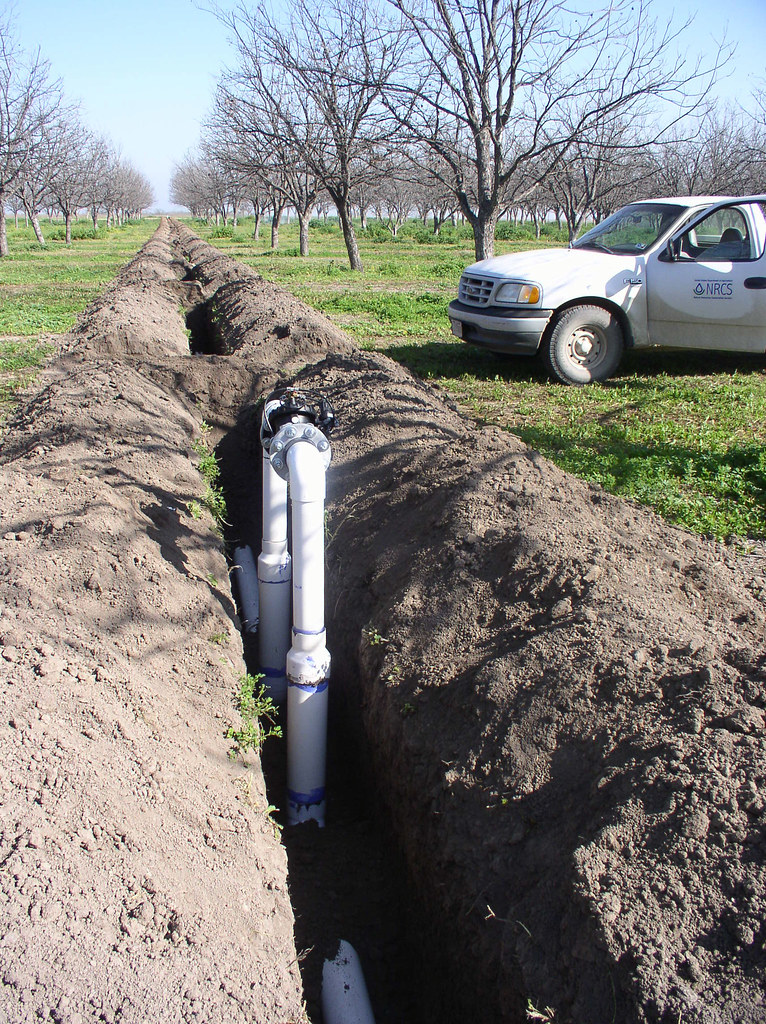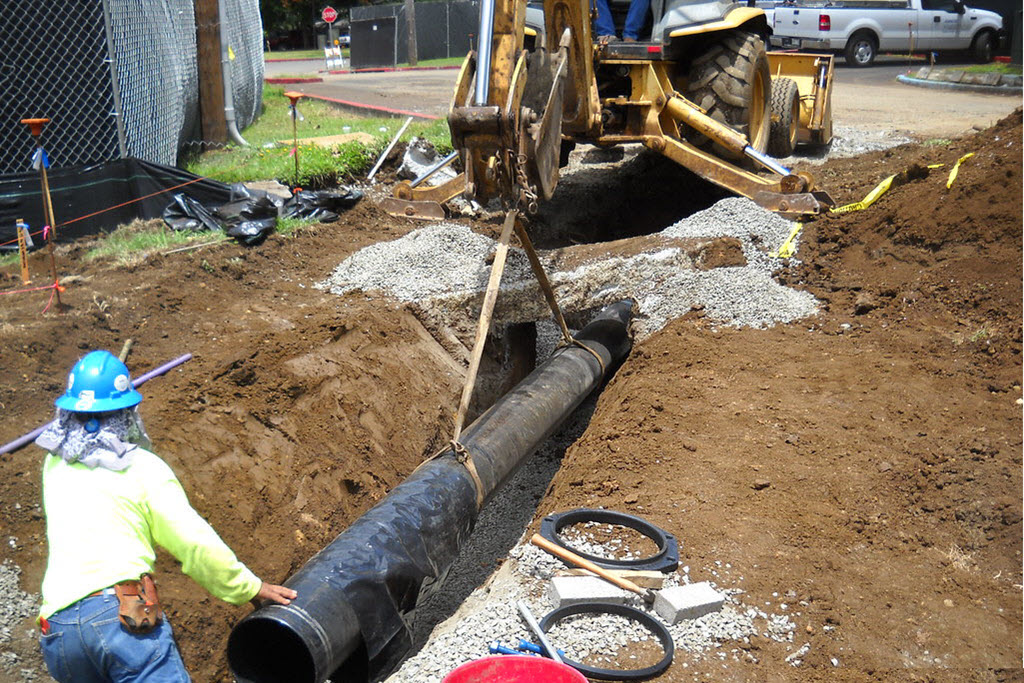Trenching Water Line Servicesin Addison MI
Trenching for Water Lines to Ensure Reliable Water Flow
We Are Locally Owned & Operated For Over 37 Years
Contact Us Today!
We Serve Businesses In And Around The Following Cities:
About Trenching Water Line Services
Introduction
The city of Addison – a thriving commercial hive with a proliferation of enterprises, hotels, restaurants, and commercial properties – requires a robust infrastructure. An essential component of this infrastructure is the water line system. Updating, maintaining, or installing a new water line often demands trenching, a procedure to create a seamless passage for water pipes that intertwines with the city’s bustling life. One crucial service that ensures smooth and efficient trenching for water lines is D&J Contracting, ensuring that Addison’s water system continues to function seamlessly. This guide offers you comprehensive insights into the trenching process for water lines in Addison, underlining its benefits and real-world applications.
Understanding the Water Line Trenching Process
The process of trenching for water lines begins with careful planning. For business owners and commercial properties, this means considering the correct path for the new water line. Here, professional services like D&J Contracting can offer expert advice about the best, least disruptive solutions. After selecting the path, the trenching process commences by excavating the ground to create a trench that will house the water line. D&J Contracting ensures to follow all necessary safety measures and technical standards during excavation.
Water Main Installation: The Next Step
Following the trenching process, the water main installation begins. This phase requires careful handling of the pipes, ensuring they are correctly aligned before they are bedded into the trench. After the pipes are installed, the professionals conduct substantial tests to ensure no leaks are present, and the water line is functioning optimally. D&J Contracting’s qualified and experienced team ensures that the installation process is handled meticulously, minimizing disruption to the commercial property.
Benefits of Trenching for Water Lines
Trenching for water lines provides several advantages to commercial properties in Addison. Firstly, it constitutes the groundwork for a stable water system, ensuring reliable water supply – a critical necessity in commercial spaces. Efficient trenching also mitigates the risk of water pipe breakage, limiting water seepage and potential damage to the property. Secondly, efficiently installing water service lines can significantly improve water pressure, vital for numerous processes in commercial buildings. Lastly, it ensures compliance with city regulations, avoiding penalties, and fostering healthy business operations.
Real-world Applications of Trenching For Water Lines
The practical significance of trenching for water lines in Addison is rampant across various business entities. For instance, hotels and restaurants heavily rely on an uninterrupted water supply to cater to their patrons. A well-structured water line ensures reliable delivery of clean water – indispensable for maintaining sanitary conditions, food preparation, and cleanliness. Commercial properties, such as office buildings and retail spaces, also depend on an effective water supply system for restrooms, cleaning, and sometimes even cooling systems.
The Role of D&J Contracting
In Addison, facilitating a reliable water system requires expertise, precision, and experience. This is where D&J Contracting steps in. With a comprehensive understanding of the city’s landscape and a deep-rooted skillset in trenching for water lines and installing water service lines, D&J Contracting ensures your commercial property dedicates its focus on core businesses activities without worrying about critical utilities such as water. Besides offering high-quality services, D&J Contracting provides round-the-clock support and guidance, making them a trusted partner for several Addison businesses.
The journey of running a new water line starts with trenching – a service that D&J Contracting has mastered. Offering comprehensive services from the initial planning and trenching to water main installation and final testing, D&J Contracting infuses efficiency, quality, and reliability into your water line systems.
In a thriving commercial landscape like Addison, establishing a reliable water line system becomes inevitable. Demystifying the process and highlighting the benefits, this guide, we hope, provided valuable insights into trenching for water lines. As you consider embarking on this journey, remember, professional guidance from experienced service providers like D&J Contracting can make the process far more seamless and beneficial, contributing positively to your commercial infrastructure.
Trenching Water Line Services Gallery


Call Us Today to receive your Free Quote for
Trench For Water Line in Addison
Serving: Addison, Michigan

About Addison, Michigan
In 1834, three years before Michigan became a state, John Talbot settled along a winding creek in a vast forest, dotted with clear blue lakes and occupied by the Potawatomi. With the raising of a simple grist mill along Bean Creek around December 1835, Addison’s history was started, operating under the settlement name “Manetue.”
Having failed to secure a spot along the river that provided enough water power to run his mill, Talbot dismantled the settlement and moved to the present location of Addison, and by the fall of 1836, milling operations restarted. The town was renamed “Peru” by 1838, and over the next generation would be given several other monikers before the final name of Addison was entered onto plat maps in 1851. Addison J. Comstock, a banker from Adrian, Michigan, purchased a sizable plat of the pioneer town and changed the identity to reflect this acquisition. The village itself was incorporated as such in 1893.
The village grew sufficiently to attract the railroad in 1883, an event which contributed to a sudden expansion of the local economy. Businesses came to Addison in great numbers including a three-story hotel, designed to cater to the visiting tourist. The Addison Courier newspaper started its 76-year run in 1884, and the economic upturn brought on by the railroad continued well after the line ceased to operate through Addison.
One of Addison’s last landmarks, the old grist mill built in 1848, was removed in 1980. Despite the economic downturn of the village in the last half of the 20th century, a large 3-day sesquicentennial celebration was held in 1984. Additionally, a 175th Anniversary celebration spanning only one day was held in the village on August 8, 2009.
In the later 2010s, the medical cannabis industry identified Addison as a community open to economic expansion with provisioning and grow centers. As of 2022, Addison has two open facilities and two additional operations under construction.
Two history books have been written on the village in recent years, “The History of Addison, Michigan” in 1996 and “Memories of Addison” in 2013, both by village historian Dan Cherry. Among the early village historians were A.J. Kempton, Richard DeGreene, J. DeWitt McLouth and Alice Slocum.
Addison got its own radio station in August 2014 with the sign-on of WQAR-LP “Q95 the Panther” at 95.7 FM. The station is owned by Addison Community Schools and programmed by students with classic rock music.
Addison Community Schools is a K-12 central campus with 797 students. The current superintendent is Scott Salow. The school mascot is a black panther.
According to the United States Census Bureau, the village has a total area of 1.00 square mile (2.59 km), of which 0.96 square miles (2.49 km) is land and 0.04 square miles (0.10 km) is water.
| Census | Pop. | Note | %± |
|---|---|---|---|
| 1880 | 291 | — | |
| 1890 | 425 | 46.0% | |
| 1900 | 470 | 10.6% | |
| 1910 | 474 | 0.9% | |
| 1920 | 416 | −12.2% | |
| 1930 | 452 | 8.7% | |
| 1940 | 465 | 2.9% | |
| 1950 | 488 | 4.9% | |
| 1960 | 575 | 17.8% | |
| 1970 | 595 | 3.5% | |
| 1980 | 655 | 10.1% | |
| 1990 | 632 | −3.5% | |
| 2000 | 627 | −0.8% | |
| 2010 | 605 | −3.5% | |
| 2020 | 573 | −5.3% | |
| U.S. Decennial Census | |||
As of the census of 2010, there were 605 people, 245 households, and 156 families residing in the village. The population density was 630.2 inhabitants per square mile (243.3/km). There were 274 housing units at an average density of 285.4 per square mile (110.2/km). The racial makeup of the village was 97.0% White, 0.5% African American, 0.3% from other races, and 2.1% from two or more races. Hispanic or Latino of any race were 1.0% of the population.
There were 245 households, of which 35.9% had children under the age of 18 living with them, 42.0% were married couples living together, 16.3% had a female householder with no husband present, 5.3% had a male householder with no wife present, and 36.3% were non-families. 28.2% of all households were made up of individuals, and 11.8% had someone living alone who was 65 years of age or older. The average household size was 2.47 and the average family size was 3.06.
The median age in the village was 35.1 years. 26.8% of residents were under the age of 18; 10% were between the ages of 18 and 24; 26.3% were from 25 to 44; 26.1% were from 45 to 64; and 10.7% were 65 years of age or older. The gender makeup of the village was 46.8% male and 53.2% female.
As of the census of 2000, there were 627 people, 247 households, and 164 families residing in the village. The population density was 642.6 inhabitants per square mile (248.1/km). There were 265 housing units at an average density of 271.6 per square mile (104.9/km). The racial makeup of the village was 98.41% White, 0.16% Native American, 0.96% Asian, 0.16% from other races, and 0.32% from two or more races. Hispanic or Latino of any race were 2.07% of the population.
There were 247 households, out of which 35.2% had children under the age of 18 living with them, 50.2% were married couples living together, 13.8% had a female householder with no husband present, and 33.2% were non-families. 29.6% of all households were made up of individuals, and 10.5% had someone living alone who was 65 years of age or older. The average household size was 2.54 and the average family size was 3.17.
In the village, the population was spread out, with 31.1% under the age of 18, 9.7% from 18 to 24, 28.2% from 25 to 44, 19.6% from 45 to 64, and 11.3% who were 65 years of age or older. The median age was 35 years. For every 100 females, there were 94.7 males. For every 100 females age 18 and over, there were 87.8 males.
The median income for a household in the village was $35,781, and the median income for a family was $45,313. Males had a median income of $31,875 versus $23,000 for females. The per capita income for the village was $15,883. About 6.0% of families and 8.1% of the population were below the poverty line, including 7.2% of those under age 18 and 7.8% of those age 65 or over.
Call Us Today to receive your Free Quote for
Trench For Water Line in Addison
Related Services in Addison, Michigan
We Serve Businesses In The Following Zip Codes:
48007, 48015, 48021, 48026, 48035, 48036, 48038, 48042, 48043, 48044, 48045, 48046, 48047, 48048, 48050, 48051, 48066, 48071, 48080, 48081, 48082, 48083, 48084, 48085, 48088, 48089, 48090, 48091, 48092, 48093, 48098, 48099, 48225, 48230, 48236, 48310, 48311, 48312, 48313, 48314, 48315, 48316, 48317, 48318, 48397